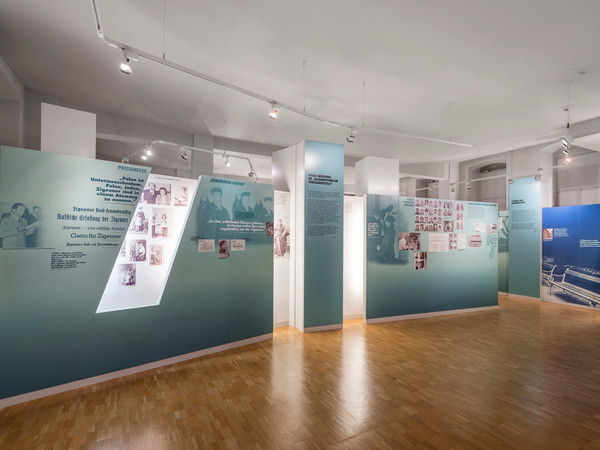The Cultural Documentation Center of German Sinti and Roma is located in the Old Town.
The Documentation and Cultural Centre has made it a priority to change this thinking.
Established with the support of the German government in 1990 in a building in Heidelberg's Old Town, the center was opened to the public in March 1997 with the world's first permanent exhibition on the Nazi genocide of the Sinti and Roma after several years of renovation and expansion.
The history of the persecution of the Sinti and Roma from 1933 to 1945 is traced on almost 700 square meters of exhibition space: from the gradual exclusion and disenfranchisement in the German Reich to the systematic extermination in Nazi-occupied Europe and Auschwitz.
"Sinti" and "Roma" are terms from the minority language Romanes, which is used in families as a second mother tongue in addition to the respective national language. In this context, "Sinti" refers to members of the minority who have lived in Central Europe since the late Middle Ages, while "Roma" refers to those of Southeastern European origin.
The term "Gypsy," on the other hand, which dates back to the Middle Ages, is a foreign term used by the majority population. It is rejected by many Sinti and Roma as discriminatory since this word is usually understood in a pejorative sense. When using the term "Gypsy" in the context of historical sources, the stereotypes and prejudices behind this term must always be taken into account.
For groups of visitors, the center offers guided tours of the exhibition with different thematic focuses after prior registration. Current questions about the dangers of racism and right-wing extremism are also discussed, as it is an important concern to understand the historical memory of the National Socialist genocide crimes as a reminder in the face of today's human rights violations and racist violence.
An audio tour system in English, French, Japanese, and Spanish is available for foreign visitors to the exhibition.
A regular program of lectures, concerts, and temporary exhibitions on cultural, contemporary historical, and political topics is organized in the spring and fall.
